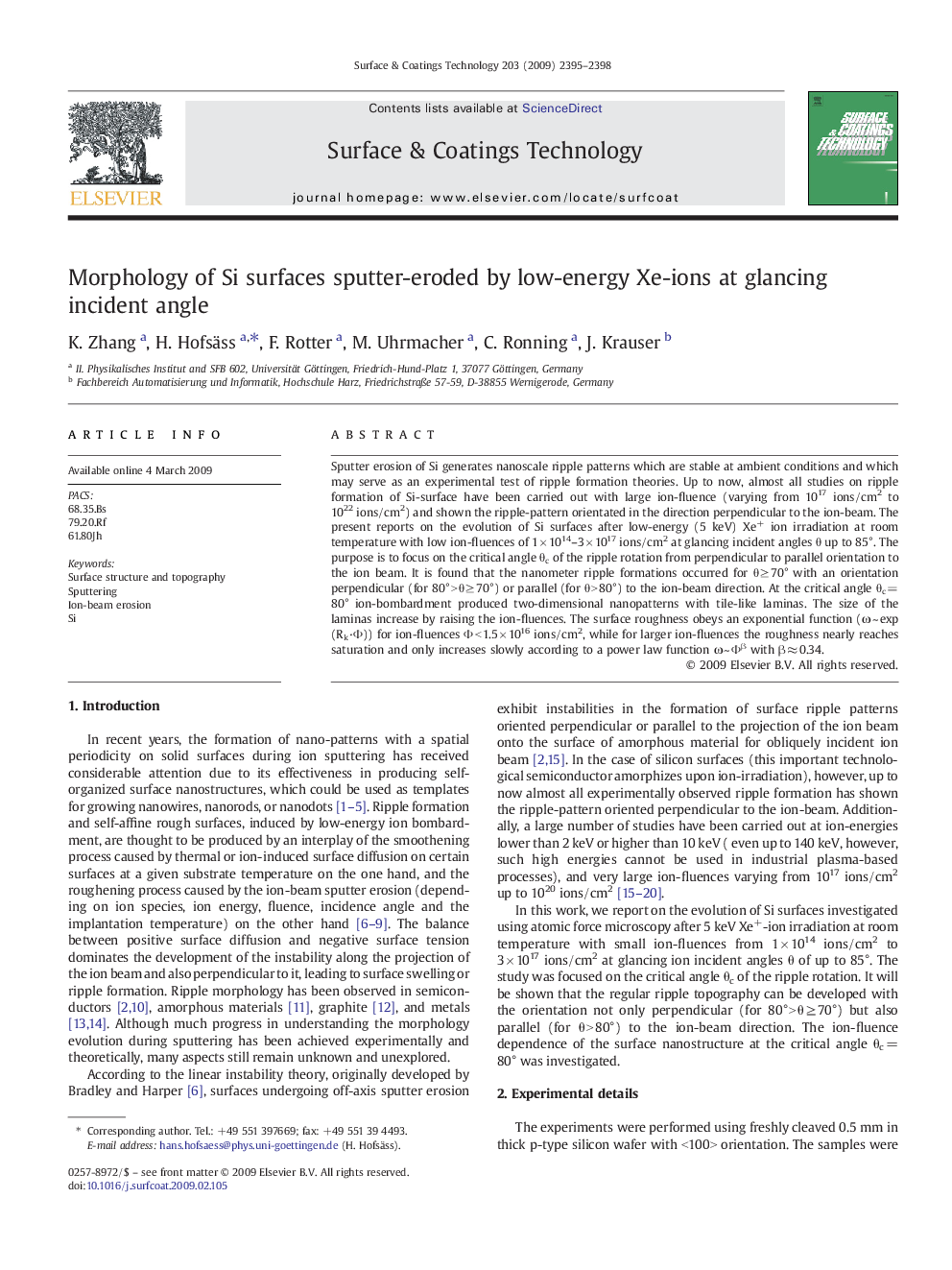| Article ID | Journal | Published Year | Pages | File Type |
|---|---|---|---|---|
| 1660139 | Surface and Coatings Technology | 2009 | 4 Pages |
Sputter erosion of Si generates nanoscale ripple patterns which are stable at ambient conditions and which may serve as an experimental test of ripple formation theories. Up to now, almost all studies on ripple formation of Si-surface have been carried out with large ion-fluence (varying from 1017 ions/cm2 to 1022 ions/cm2) and shown the ripple-pattern orientated in the direction perpendicular to the ion-beam. The present reports on the evolution of Si surfaces after low-energy (5 keV) Xe+ ion irradiation at room temperature with low ion-fluences of 1 × 1014–3 × 1017 ions/cm2 at glancing incident angles θ up to 85°. The purpose is to focus on the critical angle θc of the ripple rotation from perpendicular to parallel orientation to the ion beam. It is found that the nanometer ripple formations occurred for θ ≥ 70° with an orientation perpendicular (for 80° > θ ≥ 70°) or parallel (for θ > 80°) to the ion-beam direction. At the critical angle θc = 80° ion-bombardment produced two-dimensional nanopatterns with tile-like laminas. The size of the laminas increase by raising the ion-fluences. The surface roughness obeys an exponential function (ω ~ exp(Rk·Φ)) for ion-fluences Φ < 1.5 × 1016 ions/cm2, while for larger ion-fluences the roughness nearly reaches saturation and only increases slowly according to a power law function ω ~ Φβ with β ≈ 0.34.
